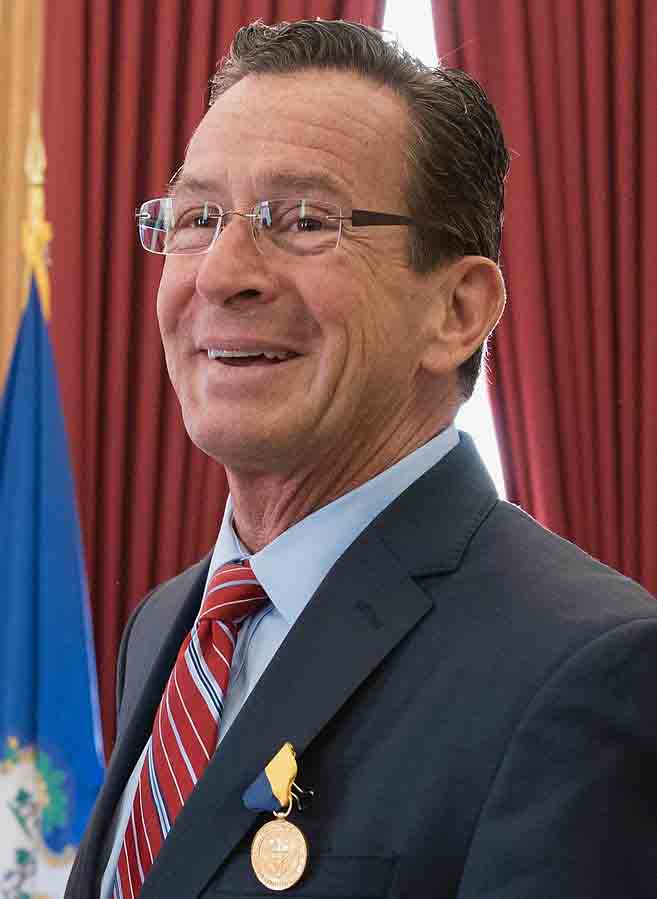
Wikimedia Commons
The Connecticut gubernatorial race is currently in chaos.
With over 25 candidates currently filed to run and no clear frontrunners on either side, experts and laymen alike have little idea what to expect. Gov. Dannel Malloy announced last April that he would not seek a third term in office, creating a power vacuum on the Democratic side. The Republican side is no clearer — a plethora of candidates has rushed to enter the race but a preeminent challenger has yet to emerge.
“We’ve just never seen such a profusion of candidates on both sides,” Colin McEnroe ’76, a Connecticut radio host and columnist who hosts a weekly political roundtable and teaches a political journalism course this semester, told the News. “I’m pretty confident in saying there’s never been anything like this.”
There are indications, however, that a Republican candidate could retake the head of the traditionally blue state. Connecticut has voted blue in every Presidential election since 1988, and registered Democrats in the state outnumber Republicans by a factor of nearly two to one. But gubernatorial elections have often swung Republican. When he was elected in 2010, Malloy was the state’s first Democratic governor since 1990. McEnroe noted that this trend is atypical — a state registered as heavily democratic as Connecticut should shut out potential Republican gubernatorial bids.
Although polling has been sparse due to the overwhelming number of candidates, an online poll conducted by Tremont Public Advisors LLC in mid-December leaned Republican. The survey found Connecticut voters tend to choose a generic Republican candidate over a generic Democratic candidate by a 12-point margin. The same poll reported that 42 percent of voters were still undecided.
Malloy has raised taxes numerous times to cut Connecticut’s budget deficit, most notably calling for the largest tax increase in state history a month after beginning his first term. Gary Rose, a professor of government and politics at Sacred Heart University, said he thinks these tax increases are one of the main reasons for Malloy’s unpopularity. But McEnroe noted that “anyone trying to fix an economically crippled state” would likely be as unpopular as Malloy.
One hope for the Democrats lies in anti-Trump sentiment, which has fueled surges for blue candidates in local and state elections nationwide. In Connecticut specifically, 2017 elections saw consistently elevated turnout for Democratic candidates.
Christina Polizzi, the communications director for the Connecticut Democratic Party, believes a grassroots resurgence against Trump will be the key for Democratic success.
“A lot of people are focused on pushing back against the Trump agenda,” Polizzi said. “They are making sure there are people in place that can push back against his policies.”
Rose and McEnroe, however, both cautioned against extrapolating too much from local results. Rose said he does not think the 2017 elections were a result of Trump; rather, he saw them as primarily a product of local politics.
Polling also suggests that Connecticut Democrats still have reason to worry. A recent survey of 500 voters, conducted by the Global Strategy Group firm, reported a 24 percent approval rating for Malloy, 12 points lower than Trump’s approval rating as reported by the same poll.
“The Republicans’ main strategy is reminding voters of Dannel Malloy,” Rose said. “[Trump and Malloy] are two lightning-rod polarizing individuals.”
The candidates on the Republican side include a number with local government experience, chief among them Mark Boughton, the mayor of Danbury; Mark Lauretti, the mayor of Shelton; and Tim Herbst, the first selectman of Trumbull. A number of Republican businessmen are also in the race, including Steve Obsitnik, Bob Stefanowski and David Stemerman.
J.R. Romano, chairman of the Connecticut Republican Party, said he thinks the candidate who ultimately emerges from the primary can capture Independent votes, which account for about 40 percent of the electorate, by emphasizing the failure of Democratic governance at the state level.
“We have to talk about the direction we want the state to head,” Romano said. “We have to show how Democrats have failed and ignored [the people’s] interests.”
Oz Griebel, an independent candidate who previously ran for governor in the 2010 Republican primary, may present a challenge to both Democratic and Republican candidates seeking to woo independent voters. He’s running with Democrat Monte Frank on so-called “fusion ticket,” and experts such as Rose believe general dissatisfaction with the state government could make him an important player come election season.
Primary elections will take place on Aug. 14.
Conor Johnson | conor.johnson@yale.edu







